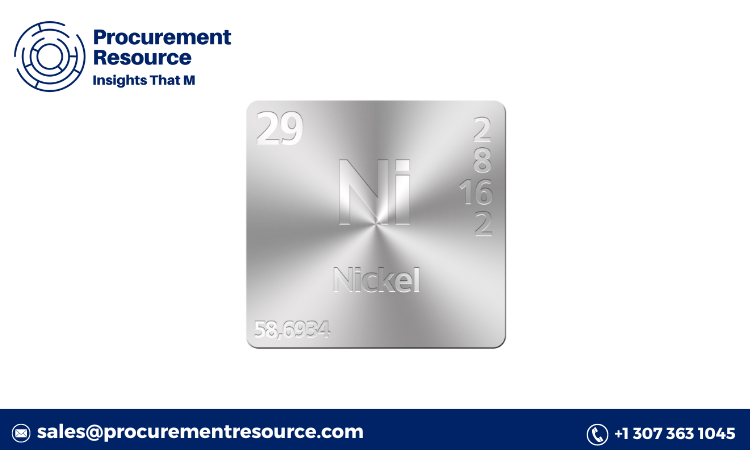Nickel is a crucial industrial metal widely used in stainless steel production, batteries, and other high-demand products, particularly in the electric vehicle (EV) sector. Its price is a key indicator of industrial health and technological shifts, making a close analysis of its history essential for investors, manufacturers, and industries dependent on its supply. This blog post will explore the nickel price history over the years, the factors driving these changes, and what we might expect in the future.
Nickel: An Overview
Nickel, discovered in the 18th century, became a strategic material in the 20th century due to its corrosion resistance, strength, and versatility. It has since become essential in a wide range of industries, from traditional stainless steel production to modern applications like lithium-ion batteries for EVs. As these applications evolved, the price of nickel has fluctuated based on supply-demand dynamics, geopolitical factors, and technological advancements.
Request For Sample: https://www.procurementresource.com/resource-center/nickel-price-trends/pricerequest
Historical Nickel Price Trends
- Pre-2000s Stability: For much of the 20th century, nickel prices were relatively stable, fluctuating between $2,000 and $4,000 per ton. The supply chain was largely unaffected by large geopolitical disruptions, and demand was steady due to industrial and infrastructure growth. Nickel mining and production expanded gradually to meet these needs.
- 2000s Boom and Bust: In the early 2000s, driven by China’s rapid industrialization and the surge in stainless steel production, nickel prices skyrocketed. By May 2007, nickel reached an all-time high of around $52,000 per ton. However, this sharp rise was unsustainable, and by the time the global financial crisis hit in 2008, prices plummeted to around $10,000 per ton.
- Post-2008 Recovery: After the financial crisis, nickel prices saw a slow but steady recovery. By 2011, prices reached approximately $25,000 per ton, driven by a rebound in industrial demand and infrastructure projects around the world. However, the recovery was short-lived as overproduction, especially from Indonesia and the Philippines, flooded the market, causing a prolonged downturn through much of the 2010s.
- Recent Years: Starting in 2019, nickel prices began to rise again, fueled by the rapid growth of the EV industry and increased demand for batteries. The global push for sustainability and green energy has made nickel a vital component in producing high-performance lithium-ion batteries, which led to supply constraints and price increases. By late 2021 and 2022, nickel prices reached a peak of nearly $50,000 per ton, driven by the war in Ukraine and associated supply chain disruptions, including sanctions on Russia, a key nickel exporter.
- 2023 Price Trends: In 2023, nickel prices showed significant volatility, with prices hovering around $22,000 to $24,000 per ton. This volatility was driven by a mix of factors: supply uncertainties due to geopolitical tensions, fluctuating demand from the EV market, and concerns about a global economic slowdown. Additionally, increasing production from Indonesia, which now dominates nickel exports, has somewhat moderated the upward pressure on prices.
Key Factors Influencing Nickel Prices
- Supply Chain Disruptions: Nickel supply is concentrated in a few countries, notably Indonesia, the Philippines, and Russia. Geopolitical issues, export bans, and sanctions have a substantial impact on global prices. Indonesia’s decision to ban nickel ore exports in 2020, for example, sent shockwaves through the market, boosting prices. Similarly, the ongoing Russia-Ukraine conflict has raised concerns over the stability of Russian nickel supplies.
- Technological Advancements: The growing demand for nickel in batteries has been a game-changer. As battery technology evolves, the need for high-purity nickel is intensifying. The shift toward EVs and renewable energy storage solutions has created a structural shift in demand, keeping prices higher in recent years.
- Environmental and ESG Concerns: Environmental, social, and governance (ESG) criteria are becoming increasingly important for nickel producers. Companies that can demonstrate environmentally friendly mining practices are more likely to secure contracts from industries committed to sustainability. This trend has implications for pricing, as higher ESG standards often lead to increased production costs.
- Market Speculation and Investment: As with many commodities, nickel prices are often driven by speculation in global financial markets. Hedge funds and institutional investors heavily influence short-term price movements, particularly in periods of uncertainty. In recent years, investment in nickel has surged due to its essential role in the green energy transition.
Future Outlook for Nickel Prices
The future of nickel prices will largely depend on the balance between supply and demand. On the demand side, the EV sector will continue to play a critical role in driving growth. As governments worldwide push for electrification, the need for nickel in batteries will increase significantly. However, this demand might be tempered by new battery technologies that use less nickel or alternative materials.
On the supply side, Indonesia’s dominance in nickel production will likely shape global market trends. While the country has significantly ramped up production, there are concerns about sustainability and whether this surge can keep up with future demand. Additionally, geopolitical risks, particularly in Russia, remain a key factor that could disrupt global supply chains.
Nickel prices have experienced significant fluctuations over the years, shaped by industrial demand, technological advancements, and geopolitical events. As the world continues its shift toward green energy and electrification, nickel’s role in the global economy will only grow.
Contact Us:
Company Name: Procurement Resource
Contact Person: Endru Smith
Email: sales@procurementresource.com
Toll-Free Number: USA & Canada - Phone no: +1 307 363 1045 | UK - Phone no: +44 7537171117 | Asia-Pacific (APAC) - Phone no: +91 1203185500
Address: 30 North Gould Street, Sheridan, WY 82801, USA

